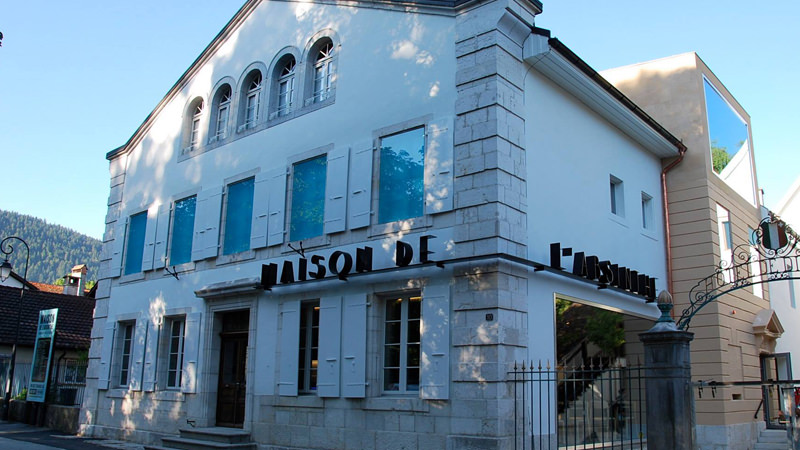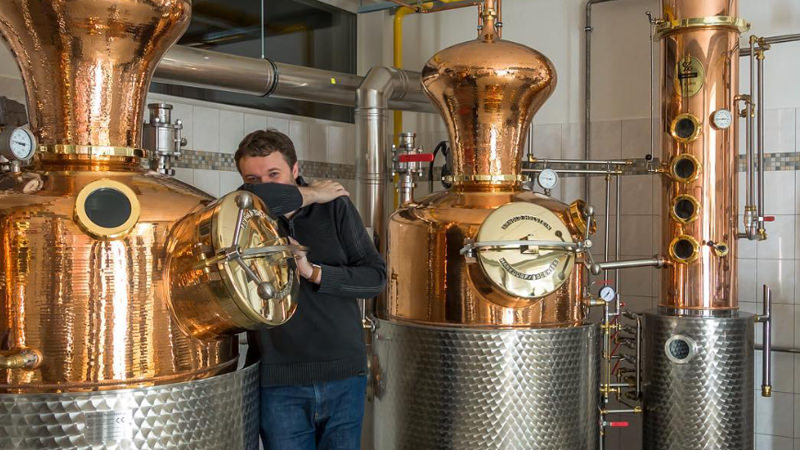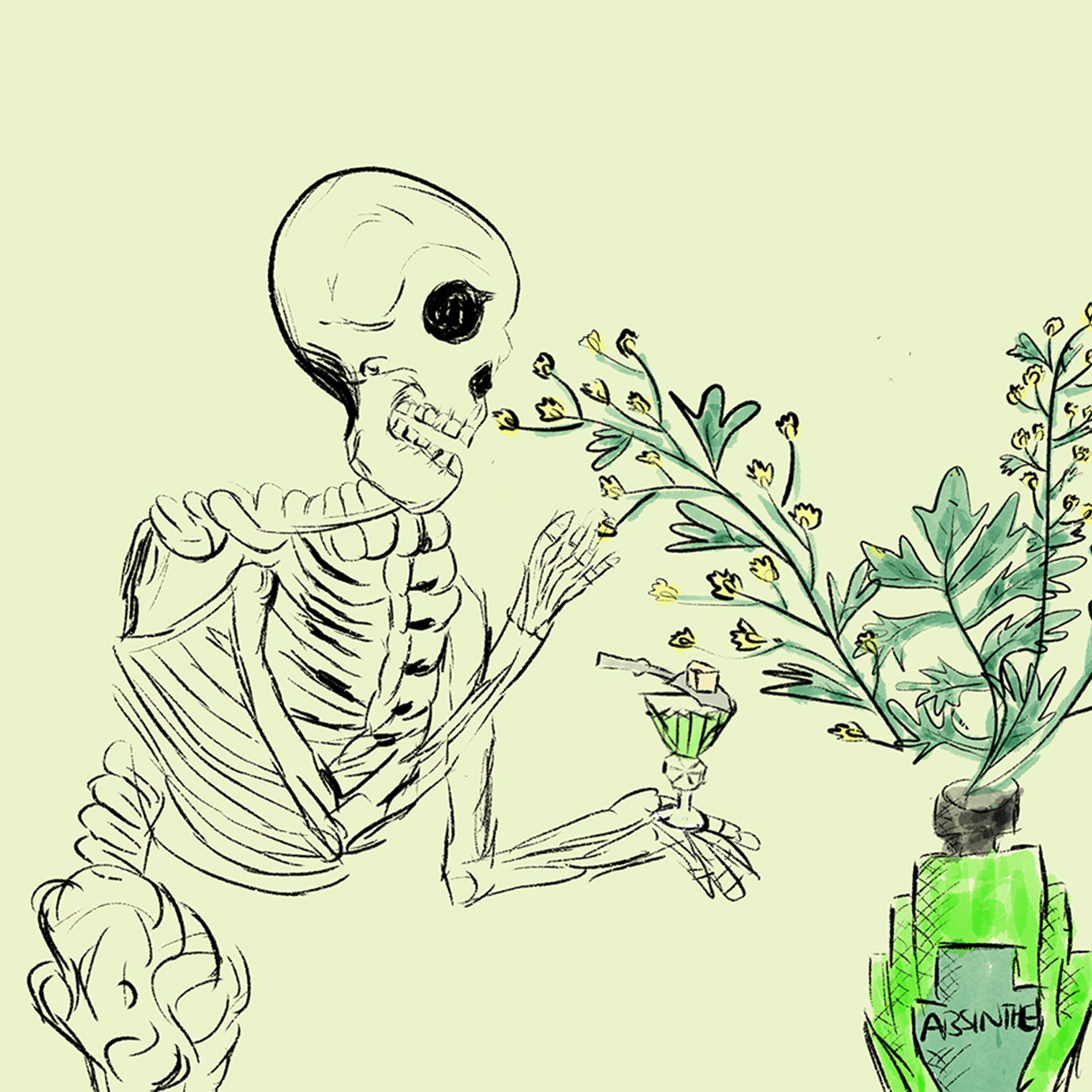Pre-ban absinthe — made before the spirit was outlawed in the U.S. and most of Europe around 1914 — is one of the rarest drinks on earth. Although the last bottles of it were produced just before World War I, it’s not completely uncommon to hear about serious collectors owning rare absinthe bottles dating back to 1880 or 1870.
Earlier this year, however, even hardcore absintheurs were shocked to learn that someone had found an unopened, approximately 200-year-old bottle of the very first production absinthe. The bottle came from the first commercial absinthe distillery, Dubied Père et Fils, and was identified by historians as dating from between 1798 and 1843. Discovered by a vintage absinthe hunter, it was subsequently donated to the Maison de l’Absinthe museum in Môtiers, Switzerland.
Although that story made headlines, only a select group of insiders then learned that a second bottle of original Dubied Père et Fils had been discovered at the same time. As it turned out, the second bottle was not given to any absinthe museum. Instead it was divided and sampled among a dozen or so dedicated fans of historical absinthe.

While the rest of us will never get to taste such a storied drink, that original has inspired a substitute: an historically accurate re-creation from the cult Czech distiller Martin Žufánek.
“When I got a chance to taste the real Dubied, very first commercial absinthe ever, I decided to make a reproduction,” Žufánek says from his distillery in the Moravian town of Boršice, not far from the Czech Republic’s eastern border with Slovakia. A card-carrying member of the global absinthe underworld, Žufánek was one of the few who had the chance to buy a shot-size sample from that second, 200-year-old bottle of Dubied.
Inspired by the taste, Žufánek then tracked down a handwritten version of the original Dubied recipe in the archives of Neuchâtel, the administrative city for the historical absinthe-distilling Val-de-Travers region of Switzerland. Unfortunately, that recipe didn’t contain enough information about the distillation process. In other words, while it might have listed the ingredients, it didn’t say how to use them.
“Sadly, the recipe isn’t everything,” Žufánek says. “You can very easily screw it up. It is all about protocol, time, temperatures, and a ton of other stuff.”
This is where it helps to have connections in the global absinthe underground. In addition to vintage bottles, absintheurs are frequent collectors of antique paraphernalia that go far beyond antique absinthe spoons, glasses, and carafes. Through friends, Žufánek managed to track down information recorded by one of the Dubied family descendants, including the original recipe and distilling protocol.
He won’t say how he got it or too much else about it, though he notes that the process was “completely different” from other absinthe-distilling steps he had seen before. It had apparently been composed after the absinthe bans took place in Switzerland in 1910 and France in 1914, with the idea that the next generation — or perhaps the one after that — would be able to use the instructions to resurrect Dubied’s version of the spirit. Obviously, whoever made the notes could have had no idea that the laws against absinthe would last for nearly a century in the drink’s two homelands.

Žufánek says that using the vintage process made a “huge” difference, a significant statement from someone whose own St. Antoine, L’Ancienne, and La Grenouille absinthes are widely praised by cognoscenti.
Although Žufánek is thought to have redeemed Czech absinthe from the terrible reputation it had a decade or so ago, it’s worth pointing out that absinthe started out as a sideline for his business. The bulk of Žufánek’s sales have long been traditional Czech spirits like pear brandy and plum-based slivovitz. Absinthe only recently starting coming in “third or fourth” in his sales, Žufánek says, followed closely by a bunch of weird liqueurs most of us have never heard of. (When I caught up with Žufánek, he was out picking sorbs to use in his new oskerušovica, a distillate made from that rare fruit.)
The new absinthe marks an achievement for cult collectors and everyday enthusiasts. It’s “probably the best absinthe I ever made,” Žufánek says, and an apparently accurate reproduction of the first commercial absinthe.
Called “Dubied 1798 – Žufánek 2018,” the new release is limited to just 440 half-liter (16.9-ounce) bottles. The Czech Republic’s share of that release sold out within a couple of hours, something that Žufánek had never seen before. For customers in the U.S. and elsewhere, bottles are also being sold by absinthes.com and alandia.de.
